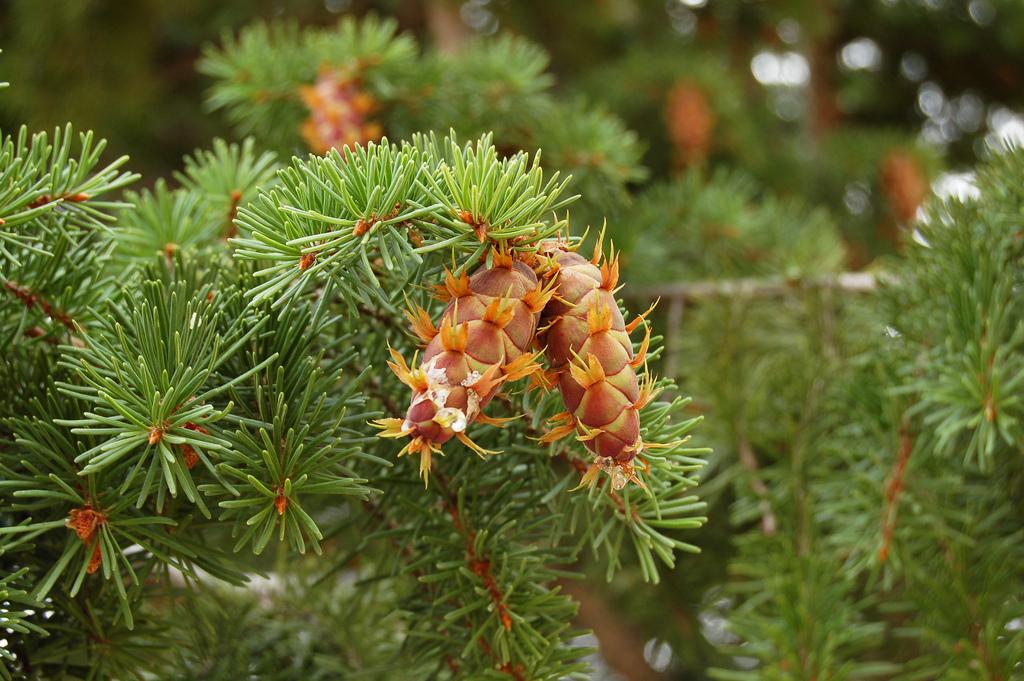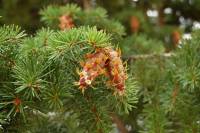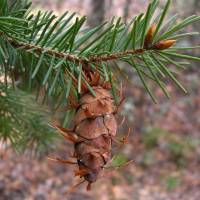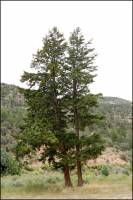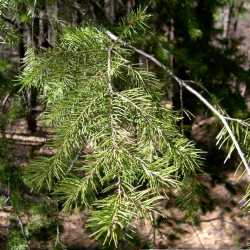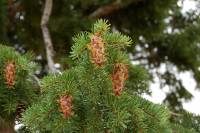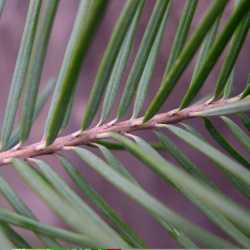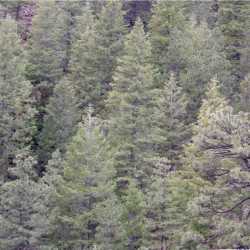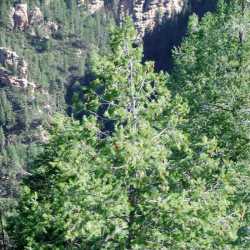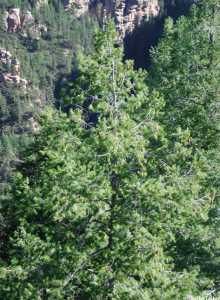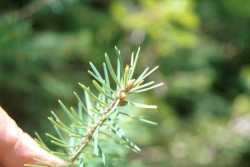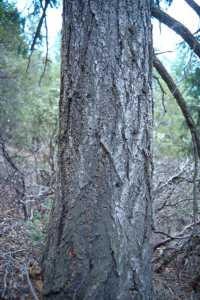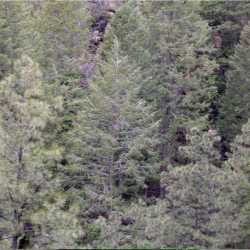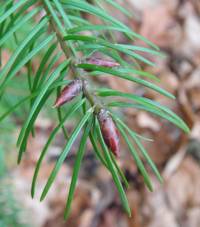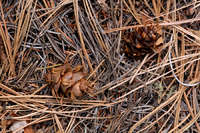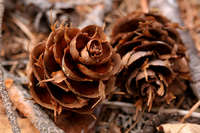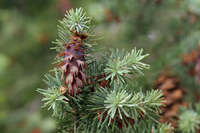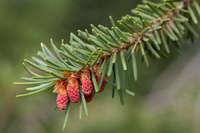Trees to 90(--100)m; trunk to 4.4m diam.; crown narrow to broadly conic, flattened in age. Twigs slender, pubescent, becoming glabrous with age. Leaves 15--30(--40) × 1--1.5mm, yellow-green to dark or bluish green, apex obtuse to acute. Pollen cones yellow-red. Seed cones 4--10 × 3--3.5cm. Seeds 5--6mm, wing longer than seed body.
Pseudotsuga menziesii is a most important timber tree, valued in both the Old and New worlds. The two intergrading varieties are sympatric in southern British Columbia and northeastern Washington.
Douglas-fir ( Pseudotsuga menziesii ) is the state tree of Oregon.
Common Name: Douglas-fir
Duration: Perennial
Nativity: Native
Lifeform: Tree
General: Trees up to 50 m tall in the largest specimens, trunk reaching 1.5 m in diameter; bark brown to grayish-brown, deeply furrowed, with a cream colored internal bark cork, with reddish flecks; branches of the tree droop downward within a narrow to broadly conic canopy, that is often flattened in age.
Needles: Solitary and linear, short-stalked and yellow-green to dark or bluish green, apex obtuse to acute, 15-30 mm long by 1-1.5 mm wide, rectangular in cross section, flattened with pale undersides, all spreading around twigs, leaving oval leaf scars.
Cones: Pendulous, reddish-brown 4-10 cm long by 3-3.5 cm wide, with thin persistent scales, exceeded in length by three-toothed papery bracts, the central tooth much longer than lateral ones.
Seeds: Seeds 5-6 mm, with a wing that is longer than the body.
Ecology: Found on mountain slopes from 5,000-10,000 ft (1524-3048 m).
Notes: This species is often characterized by its deeply furrowed bark, with is often very gray as it ages. The oldest specimens are often some of the most massive species in our region. It can be distinguished from other species by is flattened needles with a rounded tip, as well as the papery cones with the three papery bracts. The pendulous cones tell it apart from the upright cones in Abies. In the Rocky Mountain region, this species is properly P. menziesii var. glauca.
Ethnobotany: Used for coughs, sore throats, rheumatism, kidney and bladder troubles, for diarrhea, venereal diseases,colds, the pitch was used for cuts, as a diuretic, disinfectant, the pitch was chewed like gum, the leaves and young sprouts were made into tea and as a coffee substitute, as a spice for meat, baskets, lumber, fuelwood, and it had a wide variety of ceremonial uses.
Etymology: Pseudotsuga comes from pseudo, false and tsuga, the Japanese word for hemlock, while menziesii is named for Archibald Menzies (1754-1842) a Scottish botanist and surgeon.
Synonyms: Pseudotsuga mucronata, P. taxifolia
Editor: SBuckley, 2010


